- Home
- Pearl S. Buck
The Child Who Never Grew (nonfiction) Page 2
The Child Who Never Grew (nonfiction) Read online
Page 2
Woodbine House’s decision to reissue The Child Who Never Grew is based on the book’s double value: it is not only supportive to parents in a heartfelt way, but it is also a landmark in the literature about disabilities (a field in which Woodbine House has published several dozen books).
When she wrote The Child Who Never Grew in 1950, Pearl Buck was the first prominent person to acknowledge publicly a child with mental retardation. Until then, many families “put the child away” in a caretaking institution, told friends and neighbors that the child had died, and tried to forget that the child existed. Other families quietly kept the child at home, indoors for most of the day, with only limited and chaperoned contact with the outside world.
Because its causes were not well understood at the time, mental retardation also carried a shameful stigma—a disgrace that was usually shrouded in secrecy, shame, and taboo. Part of the stigma was an erroneous belief that the cause was somehow the family’s fault. But by the mid-point of the twentieth century, medical science could shed a glimmer of light to correct some of the misunderstanding. As Ms. Buck wrote, “…the majority are retarded from non-inherited causes. The old stigma of ‘something in the family’ is all too often unjust.”
For families whose lives were haunted by the sad mystery of mental retardation, all the scientific explanations in the world would not have as much impact as a famous, respected person disclosing publicly, “I speak as one who knows.” In the 1990s’ tell-all atmosphere of celebrities baring their most private scars, it may be difficult to appreciate how much courage it took for Pearl Buck to speak out in 1950. But it was a painfully courageous act at that time.
Pearl Buck is the only American woman to receive both the Pulitzer and the Nobel prizes. (The Pulitzer in 1932 for The Good Earth and the Nobel prize for literature in 1938.) When a woman of such prestige and achievement “went public” about having a mentally retarded child, the floodgates burst open. She received mailbags of letters from readers whose lives, like hers, had been affected by mental retardation. Some readers even showed up on her doorstep to meet her personally, and she patiently took time to talk with them.
Pearl Buck’s lifting the curtain about Carol certainly did not erase entirely the stigma of mental retardation, but it was a watershed. And for that reason, it needs to be placed in historical perspective.
Mental retardation has always been with us. In prehistoric times, people believed that a mental disability was caused by evil spirits—to be driven out by magical rites or potions. The ancient Greeks interpreted it as a punishment from the gods. In some cases, prayer and sacrifices were offered as attempted cure. In other instances, mentally retarded persons were killed or abandoned to die. The Romans regarded them as fools. By the Middle Ages, when belief in witchcraft was rampant in Europe, retarded people were thought to be witches and were tortured, burned, killed, or imprisoned. Some were treated as clowns or jesters, useful only for a hearty laugh.
The Age of Reason (1600s and 1700s) began, to sow some seeds of enlightenment about how children learn, which would eventually lead to an understanding of how disabled children also can learn. The groundwork was laid by Jean-Jacques Rousseau, who proposed that children’s senses could be used as concrete tools to teach skills. In 1800, a young Parisian physician named Jean-Marc-Gaspard Itard studied Victor, “the wild boy of Aveyron.” Thought to be about twelve years old when he was discovered naked and living alone in the woods, Victor had no spoken language. He had apparently been left to die in infancy, his throat partly cut. Itard, who was to become known as the father of child psychology, poked, prodded, and challenged Victor in an attempt to jolt him from his savage state into civilization. Using a metal alphabet, Itard taught Victor to spell the French word for milk, as he drank a glass of lait. Victor never learned to speak, but he learned both to recognize and spell certain words. If Itard showed him a flashcard with the word chaussure, Victor could find a particular shoe. Victor also learned to read and write verbs and adjectives to communicate in brief sentences. Itard’s great achievement was showing that a “defective” child could indeed concentrate and learn. He had potential. He was not an idiot. But Itard’s work with Victor was clearly an exception in his time. For the most part, European society placed people who were mentally retarded, deaf, insane, or epileptic with criminals in asylums.
Edouard Seguin, a student of Itard, took the investigation of Victor and human communication a bit further. Seguin contended that mental deficiency was a pedagogical rather then a medical problem. He developed a series of exercises to help a retarded child’s motor development. And only a few decades after Victor was discovered, kindergartens sprang up in Germany, based on Friedrich Froebel’s belief that very young children could blossom like flowers if schools offered educational toys as intellectual stimulation. While Seguin and Froebel’s advances did not pertain specifically to children with mental delays, their insights eventually would prove applicable.
By the 1860s, medical science was taking a harder look at people with signs of mental retardation. Dr. J. Langdon Down, an English physician, first systematically described in 1866 the condition known today as Down syndrome (formerly and unfortunately known as mongolism), the most common type of mental retardation.
The twentieth century brought further understanding. Dr. Maria Montessori, Italy’s first female physician, began a demonstration program in 1900 with twenty-two children who were believed to be incapable of learning. Adapting Itard and Sequin’s sensory teaching materials, Dr. Montessori showed that these “deficients,” as they were called, could indeed learn. In fact, they could pass exams on a level with normal children. Based on that experience, Dr. Montessori opened a school for normal children in the slums of Rome in 1907 and subsequently established schools around the world for children of all abilities.
In the first quarter of the twentieth century, Western society also toyed with social Darwinism—the theory that the most fit should not only survive but lead. If groups or nations were to become stronger by promoting the most talented individuals, what place could be left for the weaker members of society, like the mentally retarded? Only recently it has come to light in Britain that Winston Churchill used social Darwinism to suggest that the “mentally degenerate” should be forcibly sterilized. As British Home Secretary in 1910-1911, Churchill proposed that this solution would be more humane than concentrating them in institutions. In other words, prevent the degenerates from reproducing and the British empire could eliminate its feebleminded population. Churchill’s idea never took hold in Great Britain, but it ironically foreshadowed actions of his nation’s enemy, Adolf Hitler.
Meanwhile, the pioneering discoveries of Itard, Seguin, Froebel, Montessori, and a few physicians like Down would languish for decades before being applied to a broad population of children and adults with mental retardation. In the first half of the twentieth century, most were isolated at home, cared for as best a family could, treated as perpetual children and rarely challenged educationally, vocationally, or socially. Or they were sent to large institutions where they were warehoused, often with patients who were mentally ill or criminally insane. Institutions established early in this century carried pejorative names like “institutions for the feeble-minded.”
Into this world climate, Caroline Grace Buck was born on March 4, 1920. She would be known within the family as Carol, but she would be a secret from the world for thirty years. Even then, her mother would refer to Carol in her writing as “the child” or “my child,” never by name.
Carol was Pearl and John Lossing Buck’s first child, born in China where he taught agricultural science and she taught English under the auspices of an American Missionary board. At seven pounds, eight ounces, Carol was a healthy baby with “…lots of dark hair, pretty and very alert…so alert, looking around,” wrote a family friend at the time. During the first three years of Carol’s life, Pearl Buck had no hint of a problem.
In August of 1921, as Pearl Buck was motherin
g seventeen-month-old Carol in China, Franklin Delano Roosevelt was taking a dip in the frigid Bay of Fundy, on the other side of the globe. He soon fell ill with a chill and fever. Within a few days he could not walk or move his legs. After three years of agonizing effort, FDR’s struggle with paralysis culminated at the 1924 Democratic National Convention. In his first public appearance since being stricken by polio, FDR walked erect to the podium. Wearing heavy steel braces and supported on one side by a crutch and on the other by his son’s arm, FDR reached the podium to thunderous cheers. After a speech nominating Al Smith, FDR was cheered for an hour and thirteen minutes.
Whether Pearl Buck learned of FDR’s triumph at the time, through newspaper accounts or letters from friends in America, is merely speculative. But FDR’s example of confronting a handicap directly, and in public, would have an eventual impact on her.
Back in China…Carol was physically strong and vigorous and showed remarkable musical ability. But as she played and smiled through her first five or six years, it gradually became apparent that her mental development was slower than other children’s. After frustrating consultations with doctors in China, Pearl brought Carol to the United States for evaluation. The American doctors’ diagnosis was severe mental retardation.
Whenever parents are told that their child has a developmental disability, they wonder why and what—Why my child? Why our family? What caused it? What could I have done to prevent it? In The Child Who Never Grew, Ms. Buck wrote eloquently of these wrenching questions. But in the 1920s and for two more decades, she could take no consolation from a clear reason for Carol’s retardation, for there was no explanation. All a doctor could tell her at the time was “I don’t know. Somewhere along the way, before birth or after, growth stopped.”
Without any explanation or treatment for Carol, Pearl Buck struggled to accept her daughter’s condition. As the child of missionaries, Pearl Buck spent most of life in China, steeped in Chinese language and culture. From the Chinese she absorbed two important attitudes: “love of children for their own sakes and beyond” and acceptance of “any human infirmity for what it is,” she later wrote. Growing up in China, Ms. Buck saw blind, lame, deformed people coming and going in their communities. No shame, no blame. They were openly “accepted for themselves” because the Chinese believed that any affliction was part of one’s fate, ordained by heaven, to be respected as such, and therefore not the fault of the individual or the family.
While this side of Chinese philosophy helped her somewhat to accept Carol’s limitations, Pearl Buck fought another Chinese custom: the practice of abandoning female babies. A year before Carol’s birth, she had written home about “how much infanticide goes on this city. It is very prevalent over all China.…”
By the late 1920s, China was torn by political turmoil—a dangerous and frightening fact which complicated the Bucks’ dilemma about Carol and her future. How would they raise this child whose mind seemed to stop growing? What would happen to her if anything happened to them? Who would care for Carol? After much agonizing and searching, Ms. Buck decided to place Carol at age nine in a residential institution, the Training School at Vineland, New Jersey.
While Carol remained safely at Vineland, the world rolled along. In the 1930s and 1940s, Hitler sent mentally retarded people off to camps and ovens. In the same decades, Pearl Buck became a world renowned author. Her most widely read book, The Good Earth, is the story of Wang Lung, a peasant who founded a powerful dynasty. The vast majority of readers never suspected that Wang Lung’s sorrow “that his eldest girl child neither spoke nor did those things which were right for her age.…” was drawn from the author’s life.
With the huge success of The Good Earth, the public wanted to know more about Pearl Buck—just who was this American woman living in China? At her publisher’s request, she penned a brief biographical sketch, “but I could not mention Carol,” she wrote to her closest friend, Emma Edmunds White. And she asked Ms. White not to discuss Carol publicly: “It is not shame at all but something private and sacred, as sorrow must be. I am sore to the touch there and I cannot endure even the touch of sympathy. Silence is best and far the easiest for me. I suppose this is because I am not resigned and never can be. I endure it because I must, but I am not resigned. So make no mention of her and so spare me.”
Carol’s existence was clouded not only in obscurity but also in error of gender. In 1935, when Pearl Buck married Richard Walsh, her publisher, after divorcing Lossing Buck, The New York Times’ report of the marriage referred to her as “the mother of a son, 15, and a daughter, 10, by her first marriage.” (The ten-year-old daughter was Janice Buck, now Janice C. Walsh, who wrote the Afterword for this revised edition.)
Pearl Buck also wrote a highly autobiographical novel, The Time Is Noon, in the mid-1930s, but it was considered too personal to publish. It would have revealed much about the author’s life—including “an inadequate first marriage,” as she called it, and the retarded child whose existence she worked so hard to conceal from her public. The Time Is Noon was not published until 1967.
As Carol adjusted to life at Vineland and her mother wrote prolifically, other developments were occurring that would affect later generations of mentally retarded children. For example, between 1921 and 1932, the Iowa PreSchool Laboratory studied children who entered preschool at an average age of forty-two months. The study found that they had a mean gain of sixteen IQ points over an eighteen-month stay in preschool. Later tests demonstrated that their IQ gains could be maintained for an average of twelve years if they stayed in school.
Another study that would provide further evidence of the benefits of early childhood education was published in 1930 by researchers H. M. Skeele and H. B. Dye. For their small but significant study, presented to the American Association on Mental Deficiency, Skeele and Dye selected thirteen orphans under age three with an average IQ of 64. The children were moved from their orphanage to an institution for the mentally retarded where older patients and attendants offered them social and mental stimulation. Another group of twelve children, with an average IQ of 87.6, composed a control group and remained in the non-stimulating environment of the orphanage.
After eighteen months of living in the more stimulating atmosphere with adults, the first group gained 27.5 IQ points. After thirty months of languishing in the orphanage, the second group’s average IQ dropped an average of 26.2 IQ points.
Skeele and Dye kept track of these children and twenty-one years later, did a follow-up study. All thirteen in the first group had become self-supporting, all had moved out of institutions for the retarded, and their average level of schooling was twelfth grade. Of the twelve in the second, unstimulated group, five still remained in institutions (though one had died), and the group’s average school level was third grade.
It would be another generation before Skeele and Dye’s research findings would be applied to wider practice. By demonstrating that early stimulation can accelerate a child’s cognitive growth and a lack of stimulation hinders it, their work foreshadowed Head Start programs for impoverished preschoolers and early intervention programs for children with developmental delays.
During the 1930s and early 1940s, FDR was sending the world a message: a physical handicap need not be a stigma. Roosevelt’s example has been cited as a motivating force behind Pearl Buck’s ultimate decision to tell the world about Carol. What FDR did for people with physical handicaps, she hoped to do for those with mental handicaps. Her decision to write The Child Who Never Grew was not motivated by confessional soul-baring. She had a greater goal: she wanted Carol’s story to help others. Ms. Buck believed that Carol’s life could be “of use in her generation,” that her story “must be of use to human beings…her life must count.”
In the 1950s, some medical and social advances were made to enhance the lives of people with mental retardation. For example, the etiology of phenylketonuria (PKU), a congenital disease resulting in metal retardation, was found to be t
he inability to metabolize an essential amino acid. Once PKU’s cause was discovered, testing and dietary treatment became available soon after birth. In 1959, three French scientists discovered the cause of Down syndrome: a genetic mishap near the time of conception caused an extra chromosome in every cell of the body. Such scientific information helped parents to understand that they were not at fault. Nature is imperfect. Prior to these medical discoveries, many parents typically believed that they could have prevented their child’s mental retardation. A former teacher of mine, for example, thought that a minor automobile accident when she was pregnant had caused her son to be born with Down syndrome. We know today that many forms of mental retardation result from genetic accidents or other unforeseen causes, but also that others do have environmental causes such as substance abuse during pregnancy.
While the 1950s and 1960s brought certain advances, it was often a dance of three steps forward and two steps backward. Across the country, many state institutions sprung up or expanded, warehousing thousands of mentally retarded persons in huge facilities. Had Ms. Buck’s writing career not been so successful and she had been unable to afford a private institution for her daughter, Carol might have resided at a mammoth public institution called Pennhurst in eastern Pennsylvania, not far from where Pearl Buck moved after leaving China permanently. In 1950, Pennhurst housed 2,600 persons. Established in 1908 for 500 residents, Pennhurst at its most crowded was home to 3,200 people. After a thirteen-year landmark lawsuit, it was closed in 1987 and its residents were moved to small group homes.

 Come, My Beloved
Come, My Beloved The Big Wave
The Big Wave The Patriot
The Patriot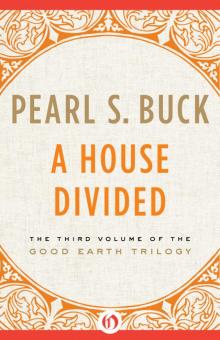 House Divided
House Divided The Good Earth
The Good Earth Death in the Castle
Death in the Castle The Eternal Wonder
The Eternal Wonder Dragon Seed: The Story of China at War
Dragon Seed: The Story of China at War My Several Worlds: A Personal Record
My Several Worlds: A Personal Record A Bridge for Passing: A Meditation on Love, Loss, and Faith
A Bridge for Passing: A Meditation on Love, Loss, and Faith Peony
Peony East Wind: West Wind: The Saga of a Chinese Family
East Wind: West Wind: The Saga of a Chinese Family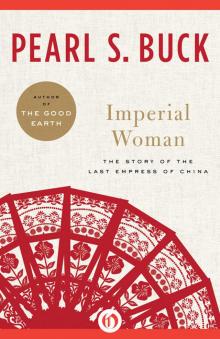 Imperial Woman
Imperial Woman Letters From Peking
Letters From Peking Kinfolk
Kinfolk The Mother
The Mother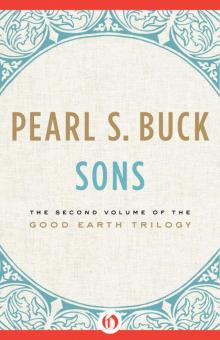 Sons
Sons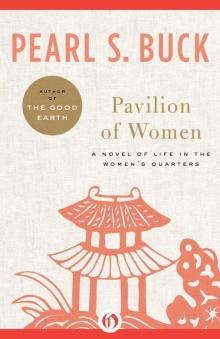 Pavilion of Women
Pavilion of Women The Living Reed: A Novel of Korea
The Living Reed: A Novel of Korea The Big Wave: A Novel
The Big Wave: A Novel Bridge for Passing
Bridge for Passing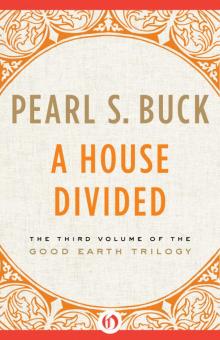 A House Divided
A House Divided Angry Wife
Angry Wife The Mother: A Novel
The Mother: A Novel Peony: A Novel of China
Peony: A Novel of China East Wind: West Wind
East Wind: West Wind Gods Men
Gods Men Patriot
Patriot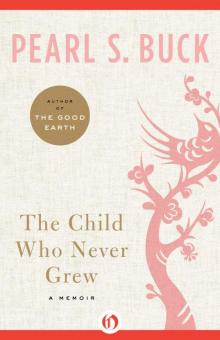 The Child Who Never Grew (nonfiction)
The Child Who Never Grew (nonfiction) The Promise: A Novel of China and Burma (Oriental Novels of Pearl S. Buck)
The Promise: A Novel of China and Burma (Oriental Novels of Pearl S. Buck) My Several Worlds
My Several Worlds Portrait of a Marriage
Portrait of a Marriage The Goddess Abides: A Novel
The Goddess Abides: A Novel Hidden Flower
Hidden Flower Time Is Noon
Time Is Noon